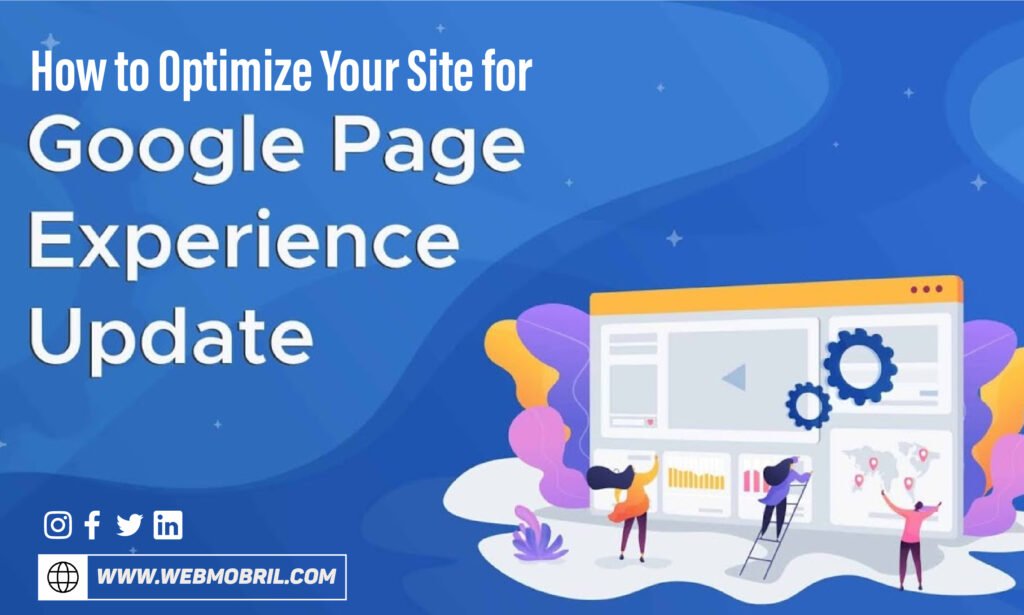Learn How to Optimize Your Site for Google’s Page Experience Update
If you have been keeping up with Google and its algorithm changes over this past year, you would have seen plenty of news about the Page Experience update. Finally, the update is here.
It’s high time you need to optimize your site for Google’s Page Experience metrics, else, you might find your competitors too far ahead of yourself, enjoying rankings boost you’re missing out on.
Don’t worry! We have got the ways on how to optimize your site for Google’s Page Experience update. Here we go:
Work on your site’s loading Speed
Google’s foremost Core Web Vitals (CWV) is the Largest Contentful Paint metric that measures the time your website takes to render the content on a page users can see. Therefore you need to insist on improving LCP for your site. You can do it by optimizing your server sluggish response times are mostly linked to slow servers.
Run some performance guidance to speed up a server so that on request it turns up a static instead of building the page every time someone clicks on it.
Other webpage components that make LCP loading slower include images, videos, and block-level elements with text features. To keep this issue side, you can compress images and text files, cache certain assets, and preload some of your elements.
Improve your FID
The first input delay (FID) is the second CWV Google keeps its eyes on. It determines the time it takes for users to be able to interact with a component they click, like a link or button. Ideally, FID should be shorter than 100 milliseconds. It is no less than your first impression.
Waiting forever after clicking on an element to land a new page is not at all good for users. Your site at snail’s pace can make users frustrated, and they’ll probably leave and not come back. But a powerful first impression- your site quick to load- will help you go a long way in increasing user engagements.
The slow FID happens when the browser is just too busy with other tasks. You can fix that using tools like PageSpeed Insights. It helps you gauge how you’re doing and where you can improve.
Work on your layout shift
Cumulative layout shift (CLS) – Google’s third CWV to optimize the site for Page Experience update. This metric tells about how much your webpage’s content layout moves around while the page is loading. A CLS score of 0.1 is required to “pass” Google’s test. Remember that’s the maximum Google wants to see. Google considers a score of 0.25 to be poor. Any higher will lead your webpage to likely shifting quite a bit.
You too would have experienced the same. While waiting for a page to fully load, you may click on something only to find that another element loaded on the page, pushing your desired element in another direction. This results in clicking something you didn’t want, like an ad. This ends up with a bad user experience. Hence, you need to fix the CLS score to make it to the top rankings.
Other Page Experience Elements You Need to Work On
Besides Core Web Vitals, you need to keep in mind a few more elements to optimize your site for the Page Experience update.
Google is now set to judge every site, considering its mobile-friendliness factor, especially regarding problems such as small text sizes and the flash media use that does not tend to be supported by the latest mobile devices.
There’s also a matter of empty reports in Google Search Console after the recent update. Many site owners are not able to see any data on how their site is performing for the page experience update. Google clarified that an empty report means there isn’t enough conclusive data to say one way or the other how your site is performing. No matter you getting decent traffic, you need more traffic to populate the report.
Google is looking for a good user experience in both organic content and advertising. Make sure the ads on your site are not interruptive or distracting.
Lastly, If Page Experience update truly matters to you, ensure your site is secure. Users need to know their data is secure with you on your site, and nevertheless, Google too needs to know it.
Wrapping up!
There’s a lot more way to manage your site to get in sync with Core Web Vitals and page experience. But ultimately, it is about providing the best user experience. If you haven’t secured your time by now, to check over and optimize these elements, you need to do it so as soon as possible.
If your ranking is dropping, perhaps your direct rivals are focussing on prioritizing these optimizations, and you’re not.
But there’s nothing to get panic about CWVs and Page Experience elements as you won’t be penalized for this. Google says this update is a tie-breaker if all other elements are considered equal. We again insist on the best user experience, as determined by the above metrics, to get on the edge.



